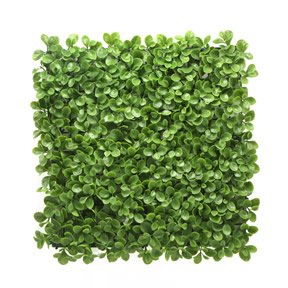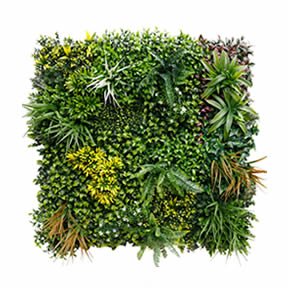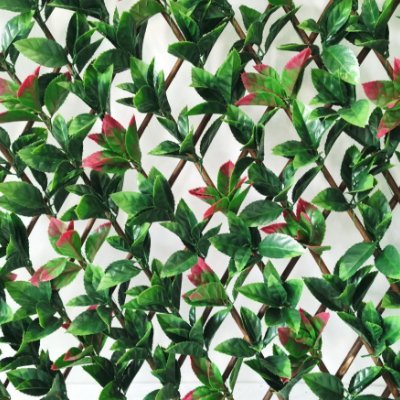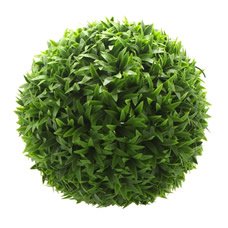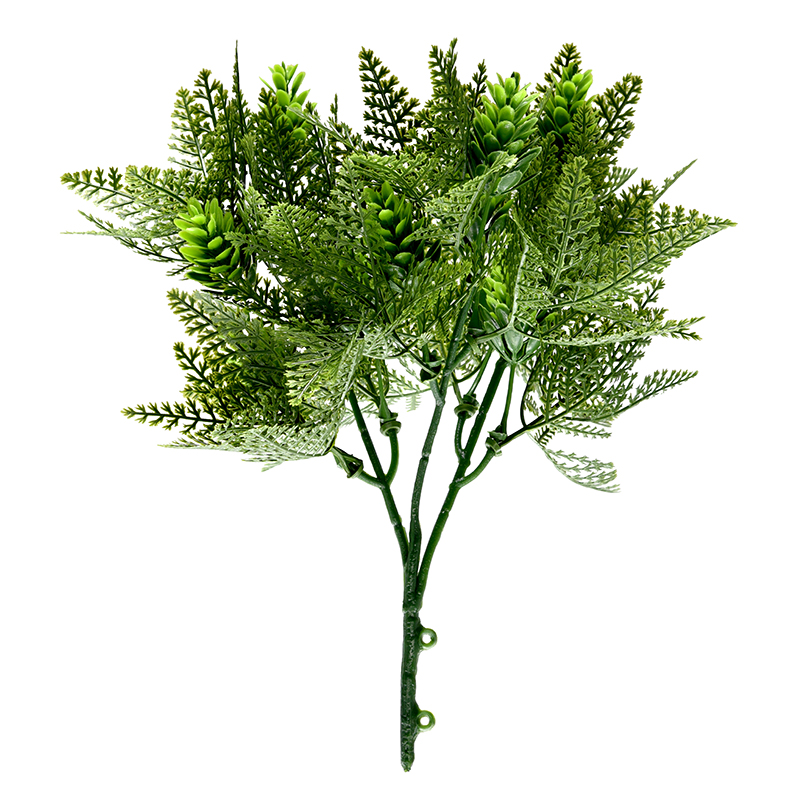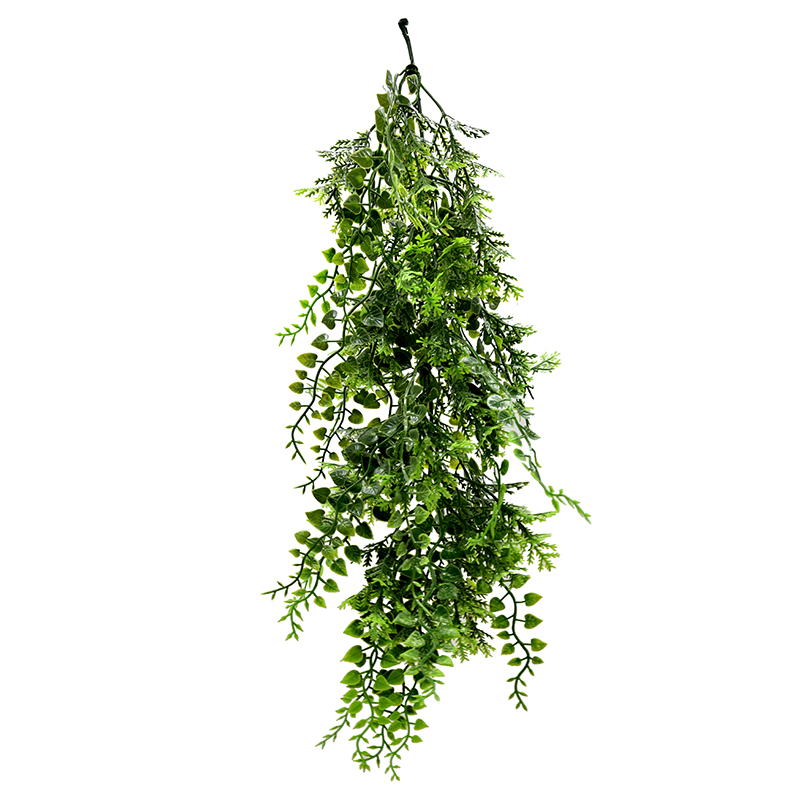Which Fake Plant Looks Most Real?
 2025 08 15
2025 08 15In the past, fake plants had a bad reputation with stiff plastic leaves, unnatural colors, and a shine so glossy it could reflect the light painfully. But times have changed. Thanks to modern manufacturing techniques and advanced materials, today’s faux greenery can look nearly indistinguishable from the real thing.
For decorating a home, office, or commercial space, fake plants provide beauty without the upkeep. There are no watering schedules, no concerns about sunlight, and no soil mess, yet they still bring all the lush charm of nature.
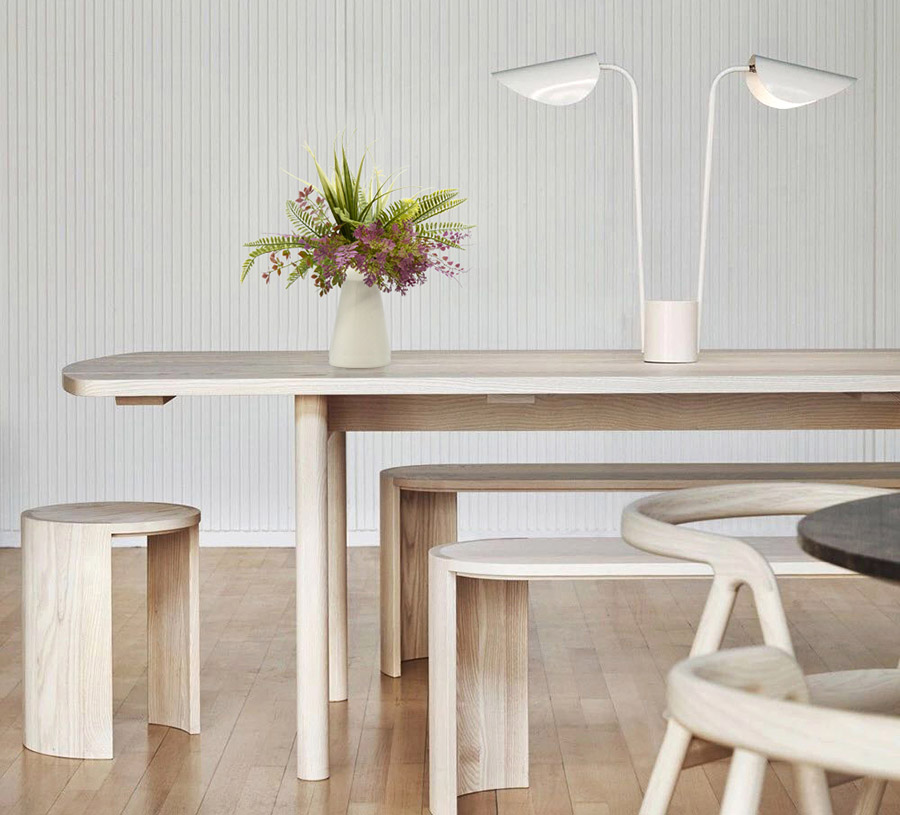
But here’s the real challenge: which fake plant looks most real? The answer depends on several factors, including materials, craftsmanship, and even how you style it in your space.
- What Is a Realistic Fake Plant?
- Key Factors That Make Fake Plants Look Real
- Top 10 Realistic Fake Plants
- How to Choose the Right Fake Plant for Your Space
- Maintenance Tips to Keep Fake Plants Looking Fresh
- Common Mistakes to Avoid with Fake Plants
- Conclusion: Choosing the Best Fake Plant for a Natural Look
What Is a Realistic Fake Plant?
The Rise of Fake Plants in Home & Office Décor
Fake plants aren’t just for those with a “black thumb” anymore. They’ve become a legitimate design choice for interior decorators, influencers, and homeowners who want a green aesthetic without the hassle.
Today, fake plants range from delicate silk orchids to towering fiddle leaf figs, and they’re being placed in spaces where real plants would never survive: dim corners, windowless bathrooms, and high-traffic commercial settings.
Why Are Fake Plants Better Than Real Plants?
1. Longevity
High-quality fake plants can maintain their appearance for many years when kept clean and placed in suitable conditions. UV-resistant and fire-retardant options extend their lifespan even in challenging environments.
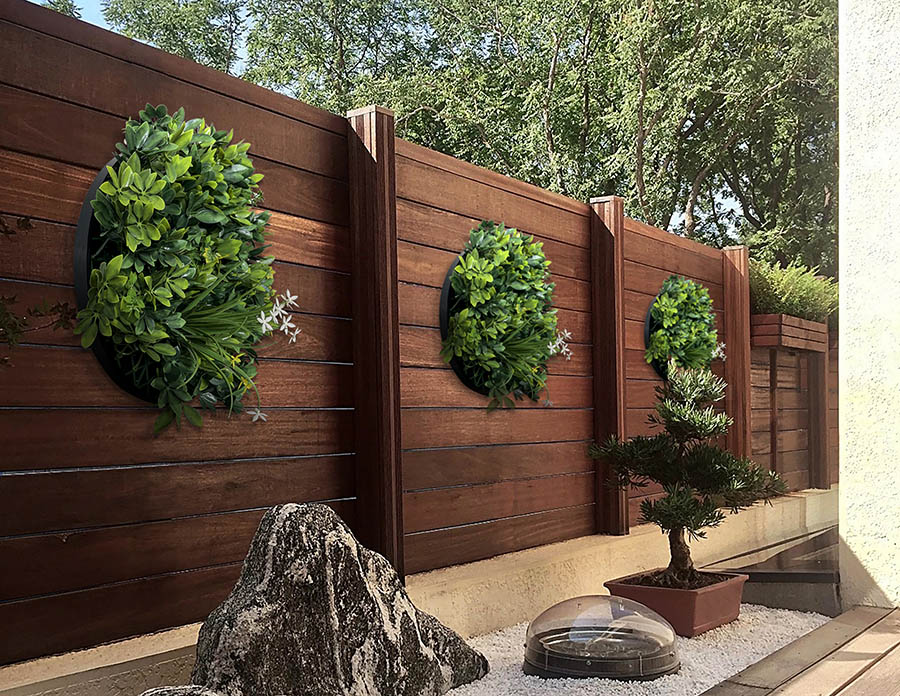
2. Versatility
Works well in locations with limited or no natural light, such as windowless offices, basements, or shaded outdoor areas. It fits a variety of design styles, including modern interiors and rustic patios.
3. No Maintenance
Requires no watering, pruning, fertilizing, or seasonal replacement. Occasional dusting is sufficient to keep them looking fresh.
4. Allergy-friendly
Contains no pollen or organic matter that can trigger allergies or respiratory discomfort. A great choice for homes, workplaces, and healthcare settings where air quality is a priority.
5. Pet-safe
Eliminates the risk of pets chewing on toxic leaves or ingesting harmful plant parts, providing peace of mind for households with animals.
What Are the Most Realistic Looking Fake Plants?
When choosing the most realistic fake plant, the decision is not only about the shape but also about the details. The best ones mimic natural imperfections: slight variations in leaf size, subtle discoloration, and irregular stem patterns.
Look for:
- Textured leaves with visible veins.
- Matte finishes to avoid plastic shine.
- Natural color gradients instead of flat greens.
- Weighted bases to give the illusion of soil-filled pots.
Key Factors That Make Fake Plants Look Real
Material Quality
| Material | Key Qualities | Common Uses | Notes |
| Silk | Soft and delicate | Flowers such as orchids and roses | Not suitable for high-humidity or outdoor areas |
| Polyester | Affordable and durable | Leafy plants | Long-lasting, widely used |
| Plastic | Weather-resistant | Outdoor plants | Avoid overly shiny finishes |
| Latex | Lifelike texture and flexibility | Often used in premium faux trees | Mimics the flexibility and slight translucency of real leaves |
Leaf and Petal Texture
In nature, leaves and petals carry subtle details that make them visually captivating. Fine veins run across the surface, edges curve gently, and tiny wrinkles form naturally with growth. Premium fake plants replicate these characteristics with precision, creating a convincing, lifelike effect. Surfaces that are overly smooth or glossy instantly give away their synthetic origin, so opting for textured finishes is key to authenticity.
Color Accuracy and Natural Shading
A real plant is never a uniform block of green. Leaves develop gradients of color, with deep forest greens blending into lighter shades at the tips where new growth emerges. Some carry faint hints of yellow, brown, or even reddish undertones that signal maturity or seasonal change. Quality fake plants capture this complexity with layered hues and subtle shading, ensuring a natural, vibrant appearance that holds up under close inspection.
Stem and Branch Detailing
The stems and branches of real plants are rarely perfect. They feature tiny knots, uneven thickness, and natural bends shaped by light and wind. High-end artificial designs mirror these irregularities, sometimes adding realistic faux “sap” or textured bark to enhance the illusion. These details make the fake plant feel more organic and help it blend seamlessly with real greenery.
Pot and Soil Realism
The realism of a plant does not stop at its leaves and stems. The base is equally important, and a well-chosen pot sets the tone, be it rustic terracotta, sleek ceramic, or a woven basket. Inside, realistic fillers such as fake moss, decorative pebbles, or textured artificial soil give the arrangement a grounded, finished look. In contrast, visible foam blocks or poorly designed bases can undermine even the most realistic foliage.
Top 10 Realistic Fake Plants
| Rank | Plant | Why It Looks Realistic | Best For |
| 1 | Fiddle Leaf Fig | Large, glossy leaves with natural vein patterns mimic real fiddle leaf figs. | Living rooms, offices, or as a statement piece in corners. |
| 2 | Monstera Deliciosa | Deeply split leaves with textured surfaces create a lifelike appearance. | Tropical-themed interiors or modern living spaces. |
| 3 | Orchid | Delicate petals with subtle color gradation imitate real blooms. | Dining tables, shelves, or bathroom decor. |
| 4 | Aloe Vera | Thick, succulent leaves with natural ridges and slight gloss. | Kitchen counters, bathroom shelves, or small planters. |
| 5 | Succulent Mix | Varied shapes and muted colors mimic a real succulent cluster. | Coffee tables, desktops, or terrariums. |
| 6 | Lavender | Delicate stems with purple blooms and textured foliage. | Aromatherapy corners (visual), kitchens, or rustic decor. |
| 7 | Peony | Layered petals with subtle color gradients for a natural bloom effect. | Centerpieces, wedding decor, or mantel displays. |
| 8 | Boxwood | Dense, small leaves with natural variation resemble real boxwood hedges. | Garden walls, topiaries, or planters. |
| 9 | Hydrangea | Full blooms with clustered petals and soft color shading. | Floral arrangements or vase displays. |
| 10 | Ivy | Trailing vines with variegated leaves give a natural climbing appearance. | Wall hangings, shelves, or trellises. |
How to Choose the Right Fake Plant for Your Space
Matching Plants to Interior Styles
Selecting a fake plant that complements the room’s overall design can elevate the atmosphere instantly. In modern interiors, plants with clean lines and bold silhouettes, such as snake plants or fiddle leaf figs, work well to maintain a sleek aesthetic.
For a bohemian-inspired setting, trailing greenery like hanging ferns or the broad, dramatic leaves of a monstera plant add a sense of relaxed abundance. Minimalist spaces benefit from understated greenery, such as compact succulents, small potted cacti, or carefully shaped bonsai trees that provide visual interest without clutter.
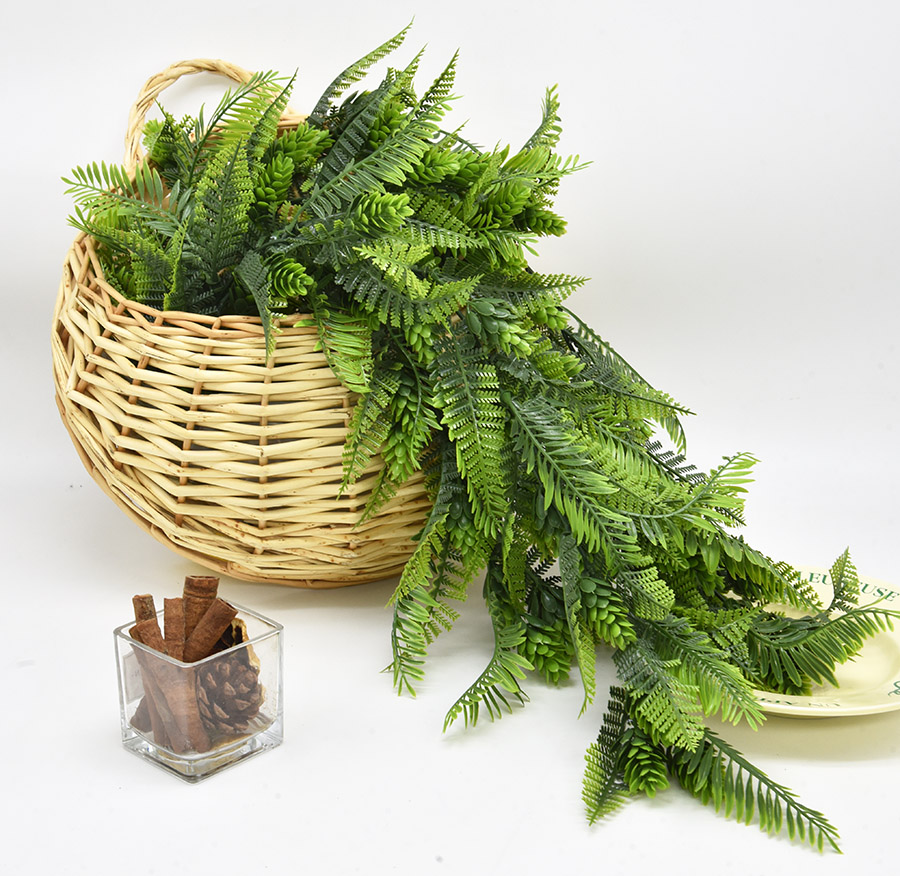
Considering Size and Proportion
The scale of the fake plant should feel balanced with the surrounding furniture and room size. A large, towering plant can overpower a small studio or narrow hallway, making the space feel cramped.
On the other hand, placing a tiny tabletop plant in a spacious living room with high ceilings may cause it to appear lost and insignificant. Aim for proportional harmony, where the plant’s height, width, and placement suit the area naturally.
Seasonal vs. All-Year Fake Plants
Fake plants offer the flexibility to switch styles with the seasons. In spring and summer, vibrant faux blooms like hydrangeas or orchids can refresh the look of a room. During autumn and winter, warm-toned arrangements or plants with rich green foliage provide a cozy feel.
Meanwhile, evergreens such as ferns, eucalyptus, or palms remain suitable all year, acting as a stable foundation that can be complemented with seasonal accents.
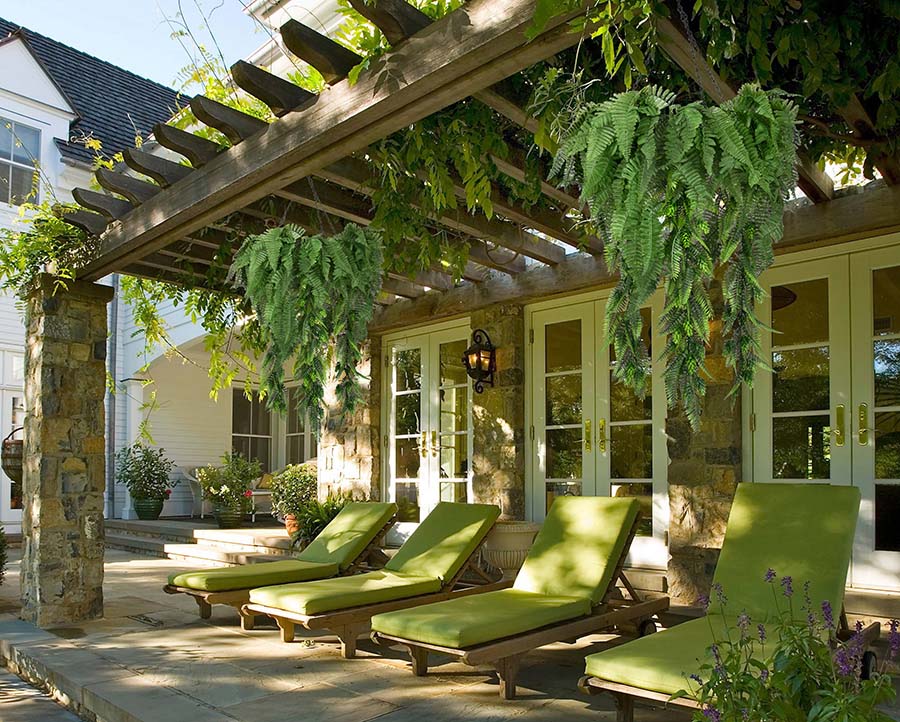
Maintenance Tips to Keep Fake Plants Looking Fresh
Dusting and Cleaning Methods
Regular cleaning prevents dust buildup, which can dull the look of artificial foliage. For routine care, gently wipe each leaf with a damp microfiber cloth to remove surface particles without scratching the finish. For hard-to-reach spots or intricate arrangements, use a hairdryer on a cool, low setting to blow away dust. Compressed air cans can also be helpful for plants with fine, delicate leaves.
Preventing Color Fading
Prolonged exposure to sunlight can cause even high-quality fake plants to lose their vibrancy. Applying a UV-protection spray helps slow this process and maintain the original color. For a quick refresh, a light mist of leaf shine can bring back luster. For matte-finish plants, avoid glossy sprays to preserve their realistic look. Always test any product on a small, hidden area before full application.
Replacing Pots and Soil for a Realistic Touch
The base of a plant plays a big role in its overall realism. Replacing plain plastic pots with ceramic planters, decorative baskets, or textured containers instantly upgrades the display. To complete the look, cover the base with natural fillers such as preserved moss, small pebbles, or real potting soil (kept dry) for an authentic finish. A thoughtful container and base treatment can make a noticeable difference in perceived quality.
Common Mistakes to Avoid with Fake Plants
Overcrowding the Room
Fake plants add charm and texture, but too many can make a space feel cluttered and chaotic. Instead of filling every corner with greenery, choose a few statement pieces that complement the room’s style and scale. A single tall plant in a bare corner or a well-placed tabletop arrangement often makes a stronger visual impact than an overwhelming collection.
Selecting Unnatural Colors
One of the fastest ways to give away a plant’s artificial nature is through unrealistic coloring. Bright neon greens or overly uniform shades can look synthetic and distract from the décor. High-quality fake plants incorporate natural variations in hue, with gentle gradients, soft undertones, and subtle imperfections that mimic the way leaves appear in real life.
Ignoring Placement and Lighting
Even the most lifelike fake plants benefit from thoughtful placement. Positioning them in areas where real plants could naturally thrive, such as near a window, beside a reading nook, or in a sunlit corner, helps create a believable setting. Avoid placing them in dark, hidden spots that make their presence feel artificial. The right lighting can highlight textures, bring out color variations, and enhance their overall realism.
Conclusion: Choosing the Best Fake Plant for a Natural Look
When it comes to finding which fake plant looks most real, the answer lies in the details such as textured leaves and realistic pots. A latex monstera, a silk orchid, or a UV-protected outdoor fern made with quality materials can keep greenery looking convincing for years.
A touch of greenery, even if artificial, can transform a space into a vibrant and welcoming environment, and no one needs to know it is fake.
